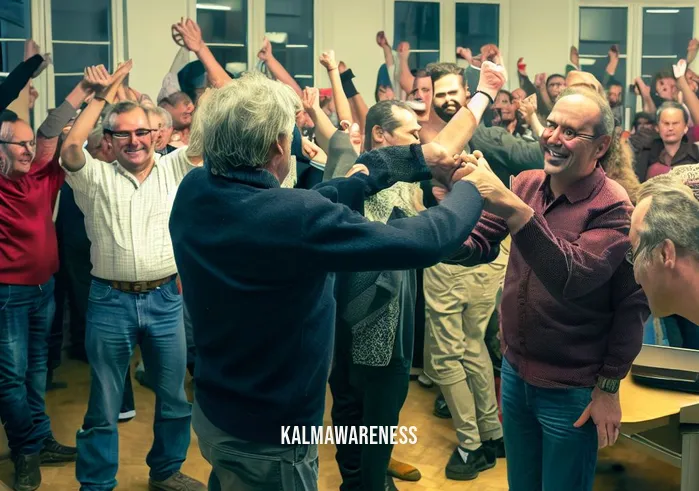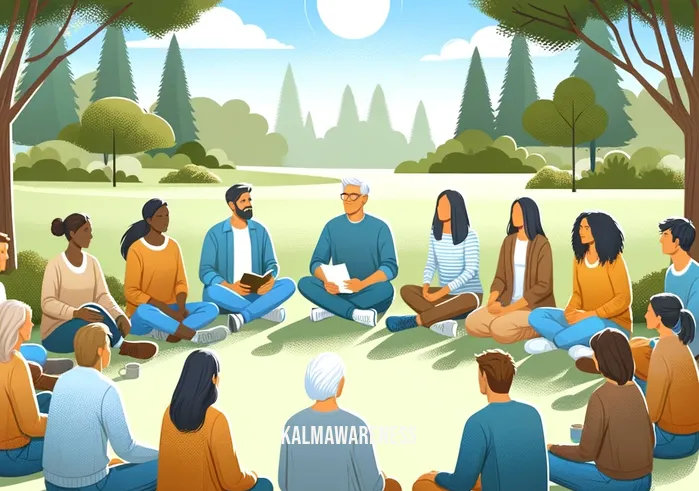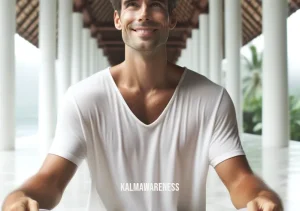Relax and Be Aware: The Path to Mindful Serenity
In a world where stress and anxiety have become the norm, the pursuit of serenity and mindful awareness becomes not just a luxury but a necessity. The ability to relax and be aware is a practice, a skill that can be cultivated and enhanced. This article aims to guide you on this journey of cultivating awareness and relaxation in the midst of your everyday life.
The Importance of Relaxation and Awareness
As modern living increasingly demands our attention and energy, the art of relaxation becomes critical to maintaining our overall health and well-being. Relaxation isn’t merely about lying on the couch or taking a vacation. It’s about cultivating a state of calm and tranquility within ourselves, regardless of our external circumstances. Relaxation is a state of mind, a choice, and a practice that leads to enhanced well-being and an improved quality of life.
Becoming aware is the first step in this journey. Awareness means being present in the moment, conscious of our thoughts, feelings, and environment without judgment or distraction. It’s about noticing the subtle sensations in our bodies, the emotions that arise within us, and the thoughts that float across our minds. The more we practice awareness, the more we can appreciate the nature of our experiences, and the better we can respond to life’s challenges and joys.
The Journey Begins with a Single Point of Focus
To relax and be aware, it can be helpful to begin with a single point of focus. This can be your breath, a mantra, or a calming image. Regardless of what you choose, this focus point serves as an anchor, helping to steady your mind and draw your attention away from the many distractions that can prevent relaxation and awareness.
“Relaxation and awareness is a journey that begins with a single point of focus.”
This practice of single point meditation has been used for centuries to cultivate calm and focus. Even a short, 15-minute body scan meditation can serve as an effective starting point. You can learn more about this meditation technique here.
Cultivating Mindful Presence
The practice of mindfulness is integral to learning how to relax and be aware. It allows us to live in the present moment and to engage fully with the world around us. Mindful presence involves observing our thoughts, feelings, and physical sensations without judgment. It involves slowing our minds and tuning into our bodies in a gentle, compassionate way.
One of the ways to cultivate mindful presence is through Sebene Selassie’s meditation practices. They involve a variety of mindfulness techniques designed to enhance our awareness of the present moment and cultivate a deep sense of calm.
Practicing mindful presence also involves cultivating an awareness of our environment and ourselves. This requires us to pay attention to the sensory experiences we often overlook – the feeling of the breeze against our skin, the taste of our food, or the sound of the rain outside. You can find helpful tips and exercises for enhancing environmental and self-awareness here.
We invite you to continue to the next part of the article where we will delve deeper into the practical ways to cultivate relaxation and awareness in your daily life, including relaxation exercises, guided meditations, and more.
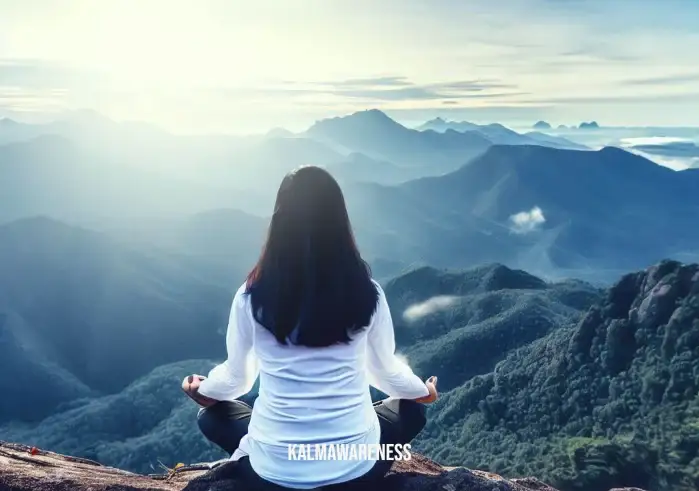
Expanding the Horizon: Advanced Relaxation and Awareness Techniques
As you deepen your journey into relaxation and awareness, you may find yourself seeking new techniques and practices to further your growth. This chapter explores a variety of advanced methods to help you relax and be aware, providing you with the tools to continue your journey into mindfulness and tranquility.
Relaxation through Visualization
Visualization, also known as guided imagery, is a potent technique that can be utilized to foster deep relaxation and enhance awareness. The Visualization Technique involves focusing the mind on serene and calming imagery, such as a peaceful forest, a tranquil beach, or a serene mountain top. This practice can aid in reducing stress, tension, and anxiety while simultaneously cultivating a heightened state of awareness and relaxation.
Aromatherapy for Enhanced Relaxation
The power of scent has been acknowledged for thousands of years in various cultures. Aromatherapy harnesses this power to promote relaxation and well-being. Essential oils like lavender, chamomile, and ylang-ylang can provide a soothing atmosphere that aids in relaxation and fosters greater mindfulness. You can explore this unique method to relax and be aware further by visiting our guide on Aromatherapy for Relaxation.
Advanced Yoga Techniques for Increased Awareness
While basic yoga postures can contribute significantly to relaxation and mindfulness, advanced yoga practices offer an even more profound experience. Techniques like Pranayama (breathing exercises) and Dhyana (meditation) can significantly enhance your sense of awareness and induce deep relaxation. Our article on Advanced Yoga Techniques provides a detailed look into these practices and how to incorporate them into your daily routine.
The Power of Mindful Movement
The practice of mindful movement involves bringing a heightened state of awareness to your physical movements. This technique can be applied to various activities, from walking to more structured practices like Tai Chi or Qigong. Mindful movement provides an opportunity to fully inhabit your body, promoting both physical relaxation and mental awareness.
Explore the concept of Mindful Movement in more detail through our comprehensive guide, and discover how this practice can form an integral part of your journey to relax and be aware.
Through the advanced techniques presented in this chapter, we aim to support your ongoing exploration of relaxation and awareness. By integrating these practices into your lifestyle, you can continue to foster a deep and meaningful connection with the present moment, cultivating a state of relaxation and awareness that permeates every aspect of your life. Each step on this path deepens your understanding, contributing to a profound sense of peace and tranquility that emanates from within.

Going Deeper: The Connection between Diet, Exercise, and Awareness
A conscious, deliberate approach to life isn’t confined to mental exercises. Our physical health also plays an important role in cultivating the ability to relax and be aware. This chapter will delve into the vital connection between a balanced diet, regular physical activity, and increased mindfulness.
Nutrition for Relaxation and Awareness
A well-balanced, nutritious diet is the foundation of good health. It impacts not only our physical wellbeing but also our mental and emotional states. Certain foods have been proven to enhance relaxation and promote a state of mindful awareness.
Whole grains, fruits, vegetables, and lean proteins can nourish your body and help maintain a balanced mood. Omega-3 fatty acids, found in foods like fatty fish, flaxseeds, and walnuts, can support brain function and promote mental clarity. Likewise, the natural compounds in green tea can stimulate relaxation and focus. You can find more about these in our Nutrition for Relaxation and Awareness guide.
Exercise and Mindfulness: A Synergetic Relationship
Physical activity is crucial for maintaining good health, but it’s also an excellent tool for cultivating mindfulness. When we exercise, we have a unique opportunity to connect with our bodies, to relax, and be aware of our physical presence in the world.
Whether it’s the rhythmic pattern of a jog, the steady flow of a yoga sequence, or the dynamic tension and release of weightlifting, physical activity can be a moving meditation when approached with mindfulness. Learn more about the connection between exercise and mindfulness in our Exercise and Mindfulness article.
Mindful Eating: A Path to Greater Awareness
Mindful eating is a practice that invites us to slow down, pay full attention to our food, savor each bite, and cultivate gratitude for the nourishment it provides. It’s a powerful tool for improving digestion, enhancing satisfaction with meals, and developing a healthier relationship with food.
This form of mindfulness can make us more aware of our body’s needs, promoting a greater sense of wellbeing and relaxation. Our Mindful Eating guide provides tips on how you can incorporate this practice into your daily routine.
Physical Relaxation Techniques
Relaxation isn’t just a mental state – it’s a physical one, too. Techniques like progressive muscle relaxation, where you tense and then release each muscle group in your body, can help reduce physical tension and promote relaxation.
Similarly, practices like deep breathing can calm the nervous system, while stretches and yoga poses can help release tension stored in the body. Dive into our comprehensive guide on Physical Relaxation Techniques to learn more about these practices.
By integrating balanced nutrition, regular exercise, and mindful practices into your lifestyle, you can create a holistic approach to relaxation and awareness. The journey to relax and be aware is a multidimensional one, combining mind, body, and spirit in a symphony of wellbeing. As we continue on this journey, let us carry with us the knowledge that each decision we make, every meal, movement, and mindful moment, brings us closer to a state of balance, harmony, and serene awareness.

Nurturing Relationships: The Role of Mindful Awareness
As we continue on our journey to relax and be aware, we’ll now explore a new dimension – the realm of interpersonal relationships. Mindfulness and awareness aren’t just individual pursuits; they extend to our interactions with others, helping us build stronger, more meaningful connections.
Mindful Communication: A Path to Greater Understanding
The quality of our relationships often hinges on our ability to communicate effectively. Mindful communication involves actively listening, responding with kindness and clarity, and being present during conversations. By being fully present and open, we can better understand others’ perspectives and foster more rewarding connections. To learn how to enhance your interactions, check out our guide on Mindful Communication.
The Power of Empathy and Compassion
When we relax and are aware, we’re better positioned to empathize with others’ feelings and experiences. Empathy, paired with compassion, allows us to respond with kindness and understanding, even when faced with difficult situations or disagreements. Find more about these transformative virtues in our Empathy and Compassion resource.
Maintaining Healthy Boundaries
Relaxing and being aware also entails recognizing and respecting our boundaries and those of others. This ensures that our relationships remain balanced, respectful, and healthy. Our guide on Maintaining Healthy Boundaries offers practical advice on setting and respecting boundaries in various relationships.
Cultivating Positive Relationships
Mindfulness can help us nurture positive relationships. By treating others with respect, understanding, and kindness, we can build connections that contribute to our overall wellbeing. Explore strategies for developing positive relationships in our Cultivating Positive Relationships section.
Relaxation and Awareness in Relationships
Bringing a sense of relaxation and awareness into our relationships can have profound effects. It can reduce misunderstandings, facilitate deeper connections, and create an environment of mutual respect and understanding. It helps us relate to others from a place of authenticity and openness, contributing to healthier, more fulfilling relationships.
When we relax and are aware, we create space not only for our feelings but also for those of others. We allow for the exchange of ideas and experiences, fostering deeper, more meaningful connections. For more information, read through our extensive material on Relaxation and Awareness in Relationships.
In sum, integrating mindfulness and awareness into our interpersonal relationships allows for healthier, more fulfilling connections. The ability to relax and be aware in our interactions helps foster understanding, compassion, respect, and authenticity. This not only benefits our relationships but also contributes significantly to our personal growth and wellbeing. As we advance on this journey towards relaxation and awareness, let’s remember that our interactions with others are a significant part of this path, offering us invaluable opportunities for learning and growth.
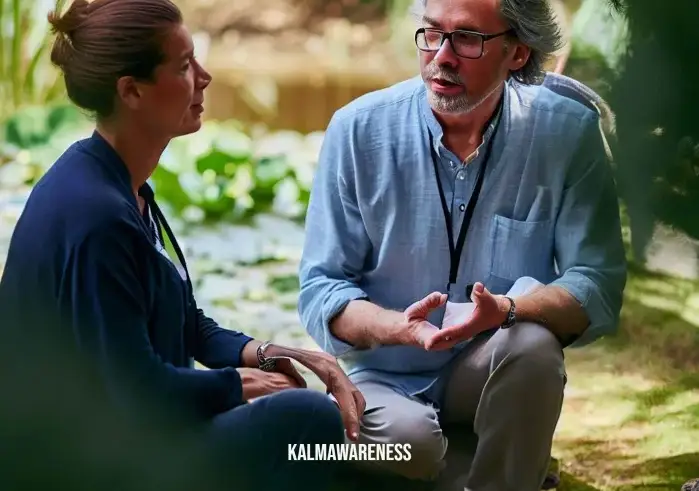
Beyond the Self: The Interplay of Mindfulness and Community Engagement
Continuing our journey of ‘relax and be aware’, let’s now broaden our perspective to encompass the communities we live in. Mindfulness isn’t merely a personal endeavor; its beneficial impacts can extend to our social interactions, helping us contribute positively to our communities.
Mindful Service: Transforming Communities
Being mindful allows us to serve our communities more effectively. By being aware of our actions and their potential impact, we can make choices that foster mutual growth and harmony. You can delve deeper into this concept in our comprehensive guide on Mindful Service.
Community Building through Mindfulness
Relaxing and being aware have a role to play in building stronger, more cohesive communities. Through mindful interactions, we can foster relationships based on mutual respect and understanding, thereby strengthening the fabric of our communities. Check out our insights on Community Building for a deeper understanding.
Mindful Leadership: Inspiring Change
Mindful leadership is about being fully present, which allows for better decision-making and encourages a more harmonious, productive environment. Leaders who practice mindfulness can drive positive change, inspire others, and foster a culture of awareness and compassion. Learn more from our detailed section on Mindful Leadership.
The Ripple Effect of Mindfulness
When we relax and are aware in our actions, we create a positive ripple effect in our communities. These mindful practices can inspire others to follow suit, thus gradually transforming our surroundings. Discover more about this transformative effect in our article The Ripple Effect of Mindfulness.
Mindfulness in Education: Fostering Future Generations
Bringing mindfulness into education can help nurture future generations who are aware, compassionate, and socially responsible. Educators who incorporate mindfulness practices into their teaching methodologies can significantly impact their students’ overall development. Explore this further in our piece on Mindfulness in Education.
In conclusion, extending the principles of ‘relax and be aware’ beyond our personal sphere can bring about transformative changes in our communities. Mindful service, community building, mindful leadership, and mindfulness in education are different facets of how our individual mindfulness practices can positively influence our surroundings.
The ripple effect of individual mindfulness can lead to collective consciousness, creating communities that are compassionate, respectful, and harmonious. As we continue to traverse the path of relaxation and awareness, let’s remember the profound impact our individual journeys can have on our larger societal canvas. Let’s strive to utilize mindfulness not just for our personal growth but also for the betterment of our communities.
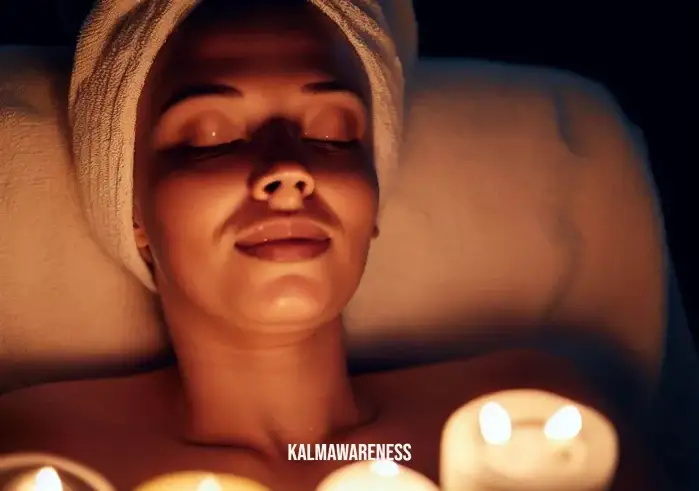
Embracing the Future: Mindfulness in the Digital Age
As we reach the final chapter of our mindfulness journey, it’s important to discuss how we can maintain a state of ‘relax and be aware’ in the fast-paced, technology-driven world we live in. Mindfulness isn’t just an age-old practice; it is a valuable tool for thriving in the digital age.
Mindful Technology Use
While digital tools offer numerous benefits, they can also serve as sources of distraction. It’s here that the mantra of ‘relax and be aware’ becomes crucial. By adopting a mindful approach to technology use, we can enjoy the benefits while minimizing the potential harms. You’ll find useful strategies in our guide on Mindful Technology Use.
Digital Detox: Reclaiming Your Time
In a world filled with digital noise, taking time to disconnect is essential for mental well-being. A digital detox allows you to relax, regain awareness, and reconnect with the world around you. Check out our tips for a successful Digital Detox here.
Mindfulness Apps: Harnessing Tech for Tranquility
Mindfulness apps are a testament to the fact that technology can be a tool for relaxation and awareness. These apps offer guided meditations, breathing exercises, and other techniques to promote mindfulness. Discover some of the best Mindfulness Apps in our curated list.
Mindful Social Media Use
Social media can be both a boon and a bane. It’s a platform for connection, but it can also lead to stress and comparison. By using social media mindfully, we can benefit from its advantages while avoiding potential pitfalls. Find useful insights in our article on Mindful Social Media Use.
Virtual Mindfulness: Remote Practices
The digital age has opened doors to practice mindfulness remotely, providing opportunities for online meditation classes, virtual retreats, and more. This helps us relax and be aware, regardless of geographical limitations. Explore the possibilities of Virtual Mindfulness in our detailed section.
In closing, as we increasingly integrate technology into our lives, maintaining a state of ‘relax and be aware’ becomes even more crucial. Navigating the digital world with mindfulness allows us to harness the benefits of technology while preserving our mental well-being.
Adopting mindful technology use, taking regular digital detoxes, utilizing mindfulness apps, being mindful of our social media use, and embracing virtual mindfulness practices can help us thrive in this digital age.
As we conclude this journey, remember that mindfulness is a continuous process of growth and learning. As the world evolves, let’s strive to evolve our mindfulness practices too, allowing us to adapt and thrive in any circumstances.
We hope this series has provided you with valuable insights and practical tools to incorporate mindfulness into various facets of your life. Remember, the goal is not perfection, but consistent progress. Keep the mantra of ‘relax and be aware’ close, and let it guide you through life’s ups and downs. Thank you for joining us on this journey, and here’s to a mindful future!

